6. The Seventh Seal
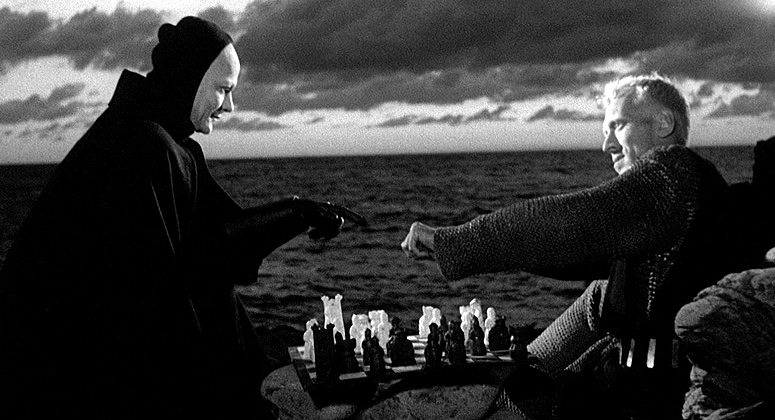
Whose philosophy is best represented by this movie? Seneca:
“It takes the whole of life to learn how to live, and – what will perhaps make you wonder more – it takes the whole of life to learn how to die.” “Rehearse death. To say this is to tell a person to rehearse his freedom. A person who has learned how to die has unlearned how to be a slave.”
This iconic philosophical film features a weary knight journeying home from fighting in the Crusades. Finding his country in the throes of the Black Death, our hero embarks upon a new personal battle with a foe no less than his own mortality.
When his return home is greeted by a grim, hooded personification of death, the knight is forced to examine his own life and weigh the moral consequences of his past actions. Fearing that his life has lacked true meaning, he challenges Death to a game of chess to win enough extra time for him to perform one meaningful deed.
As one of the most famous Stoic philosophers, Seneca strongly encouraged the living to consistently and confidently confront their own mortality. He believed that humans, by doing so, could attain greater personal freedom and even overcome the fear of death which torments the unreflective mind. He no doubt would have smiled in encouragement at the knight’s symbolic game of chess with personified Death in The Seventh Seal, and sympathized with his existential crisis over the fleeting nature of life.
7. The Tree of Life
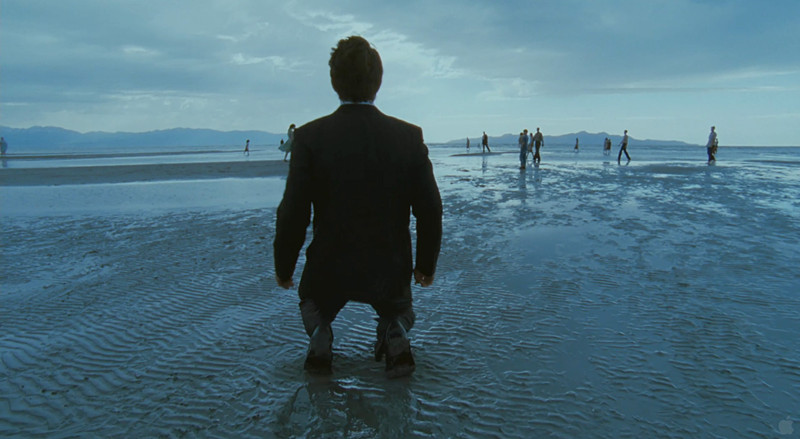
Whose philosophy is best represented by this movie? Simone Weil:
“It is grace that forms the void inside us and it is grace that can fill the void.”
The unconventional narrative structure of this film presents us with alternating perspectives of life as macrocosm and microcosm. We see the travails and tragedies of a small Texas family through the eyes of one of the sons reflecting on his youth.
We’re told, as his mother tells him, that there are two paths in life – the path of nature, represented by his authoritarian father, and the path of grace, shown by his submissive and loving mother. Interspersed with the drama of family life and adolescence are sublime sequences showing the power of nature, the vastness of the universe, and the complexity of evolution which immediately throw into perspective the seemingly minor circumstances of any individual.
Can God possibly be aware of the private sorrows of one tiny speck in the universe? If God never speaks to people, how can they be sure he’s even there to listen? Terence Malick poses these questions and more in The Tree of Life.
Simone Weil was deeply concerned with the seeming absence of God in the world – an observation The Tree of Life also presents during its moments of tragedy and sorrow. The constant struggle between fallible nature and ideal grace is a running theme throughout the film, and Weil had much to say on the nature of a world that could be both created by a perfect divinity and yet so full of trouble. Her efforts to formulate a faith that is both realistic and sublime left a legacy that is in many ways echoed in Malick’s thoughtful film.
8. Blade Runner
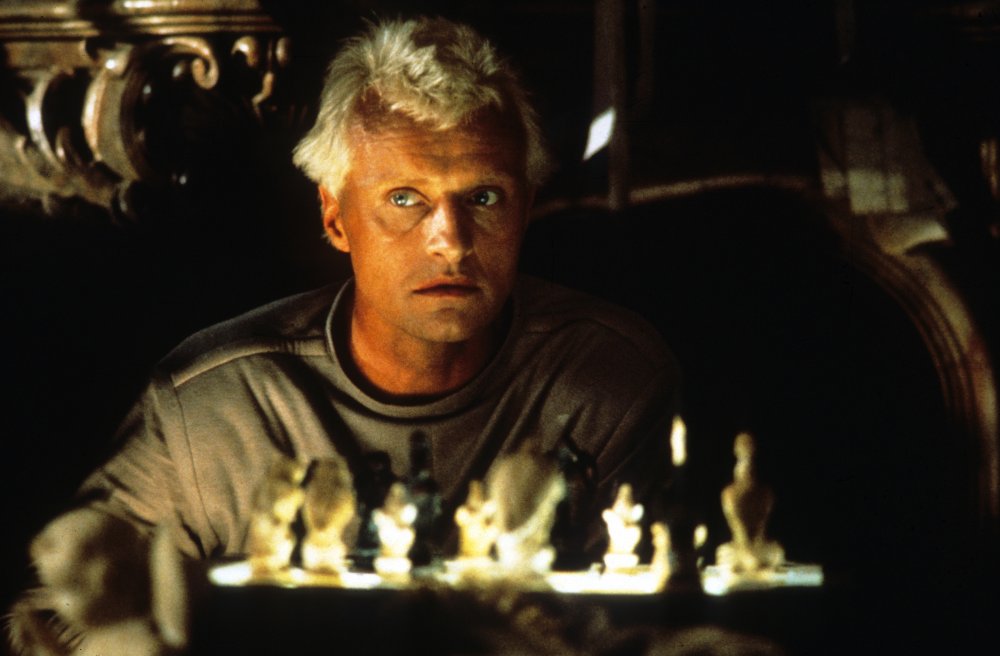
Whose philosophy is best represented by this movie? Plato:
“When the mind’s eye rests on objects illuminated by truth and reality, it understands and comprehends them, and functions intelligently; but when it turns to the twilight world of change and decay, it can only form opinions, its vision is confused and its beliefs shifting, and it seems to lack intelligence.”
In this futuristic sci-fi tale, humans have learned to bioengineer a type of synthetic human with tremendous strength called a “replicant” to perform hard labor for them. The replicants have been programmed with implanted memories and simulated emotions, but have no independent identities.
Harrison Ford plays Rick Deckard, an ex-cop who has been recruited to hunt down and exterminate four escaped and dangerous replicants. But when Deckard finds himself attracted to Rachael, a mysterious and beautiful woman who he discovers is a replicant, he is forced to reckon with the nature of what it means to be human and whether he himself possesses those qualities.
This film is ripe for comparisons to Plato’s famous allegory of the cave, in which subjects chained in a cave observe shadows cast upon the rock wall from a light source behind them. Their reality consists of only the shadows cast, to which they give names and descriptions without being aware of the original forms which shape the shadows.
Likewise, humans are servants to their senses, which may or may not accurately the realities they convey. When Deckard discovers that Rachael is a replicant, his perception of reality enters a new phase similar to that of the cave dwellers being freed to discover that their perceptions have consisted of only shadows. Deckard’s own identity crisis feels perfectly at home in the middle of Plato’s profound parable.
9. Under the Sun of Satan
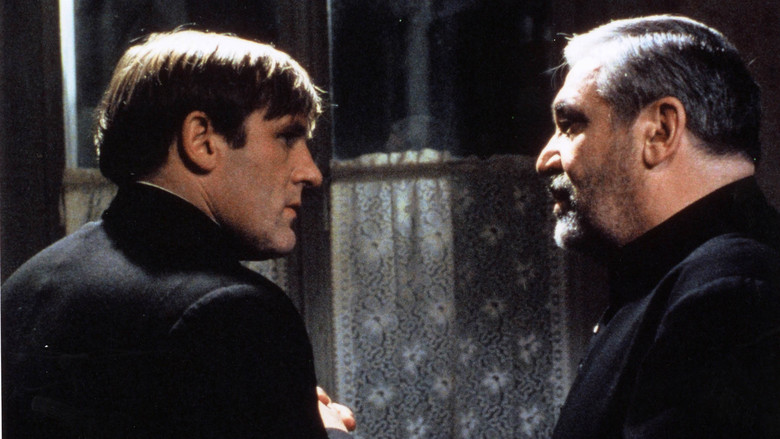
Whose philosophy is best represented by this movie? Søren Kierkegaard:
“And this is the simple truth – that to live is to feel oneself lost. He who accepts it has already begun to find himself, to be on firm ground. Instinctively, as do the shipwrecked, he will look around for something to which to cling, and that tragic, ruthless glance, absolutely sincere, because it is a question of his salvation, will cause him to bring order into the chaos of his life.”
Under the Sun of Satan is an adaption of a novel by Georges Bernanos, who also authored Diary of a Country Priest. Like the latter story, this one provides an unblinking examination of the spiritual life of a conflicted clergyman. Gérard Depardieu plays Donissan, a faithful priest tormented by his fears of damnation and of being inadvertently used by Satan while intending to serve God.
After a chance meeting with a horse trader who Donissan is horrified to learn may be Satan himself, the priest worries that his newly discovered sense of spiritual power and insight may be the work of the devil, and not of God. His attempts to rescue the soul of a young woman who has killed her lover become hopelessly complex, and Donissan begins to suspect his own motives for every good work he tries to do.
The priest in Under the Sun of Satan would surely have found a sympathetic friend in Kierkegaard, who often wrote about exercising faith in the face of uncertainty and doubt. His book “Fear and Trembling” considers the case of Abraham, who was commanded to kill his own son by his God. How could Abraham be presented with a divine command which he considered supremely unethical without doubting the source or the validity of that command?
Likewise, Gérard Depardieu’s cleric faces crippling doubt over whether God or Satan holds more power in the wicked world, and therefore in himself. But Kierkegaard might have pointed out that only in a moment of supreme disorientation like this can the first step in true faith be taken.
10. Spring, Summer, Fall, Winter… and Spring
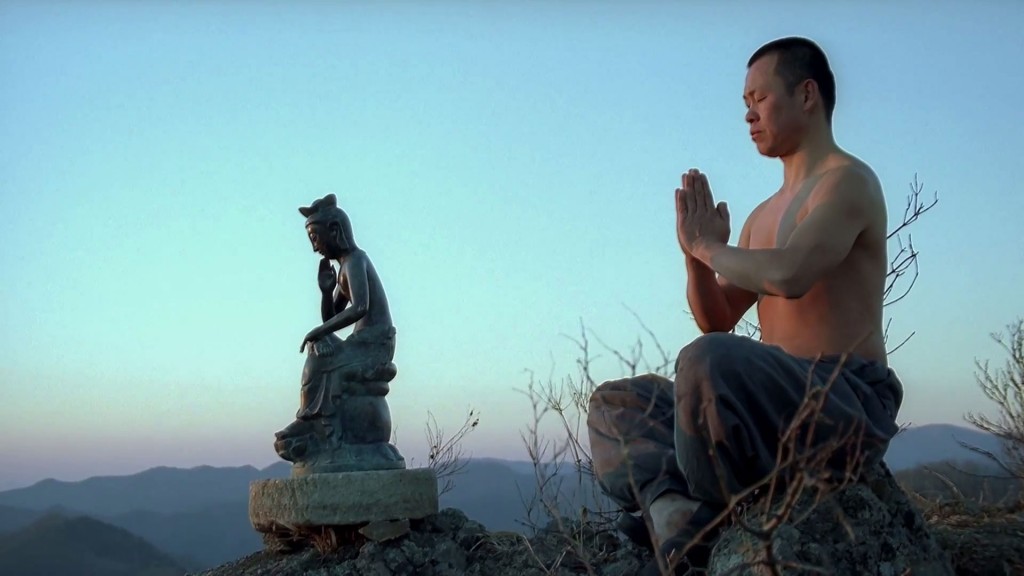
Whose philosophy is best represented by this movie? Gautama Buddha:
“All conditioned things are impermanent — when one sees this with wisdom, one turns away from suffering.”
On a floating monastery in a beautiful lake, a young Buddhist monk and his master live their austere, simple lives in Spring, Summer, Fall, Winter… and Spring. This film traces the life of the young monk as he grows into adulthood and old age, with each stage of his life represented by a season of the year.
The wise master oversees the boy’s training with the kindness and patience of a parent, using the child’s failures and successes to teach valuable life lessons. But when the teenage boy falls in love for the first time, his carefully planned circle of life is threatened with disruption.
This film perfectly exemplifies Buddhist teaching and ideals in both its narrative structure and its message. By framing its story within the changing seasons of the year and of life, it reminds us of the impermanent yet recurring nature of each stage of existence. The great Gautama Buddha sought to help people understand why they suffer and how they can end their suffering.
Likewise, the master in Spring, Summer, Fall, Winter… and Spring knows and seeks to teach his student that the importance of every season should be embraced without attachment. Siddhārtha Gautama taught that by maintaining the proper perspective and welcoming each change in one’s life, we may avoid the sorrow that comes from clinging to either the joys or sorrows of any given season, and thereby achieve balance.